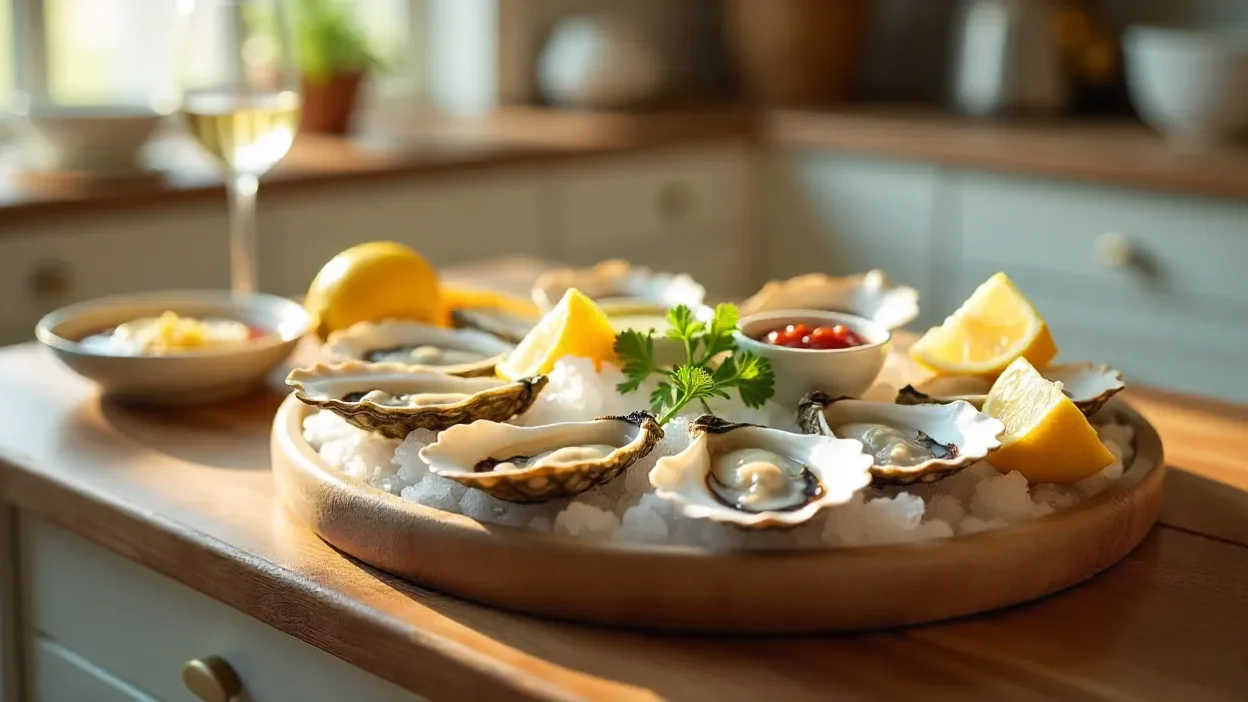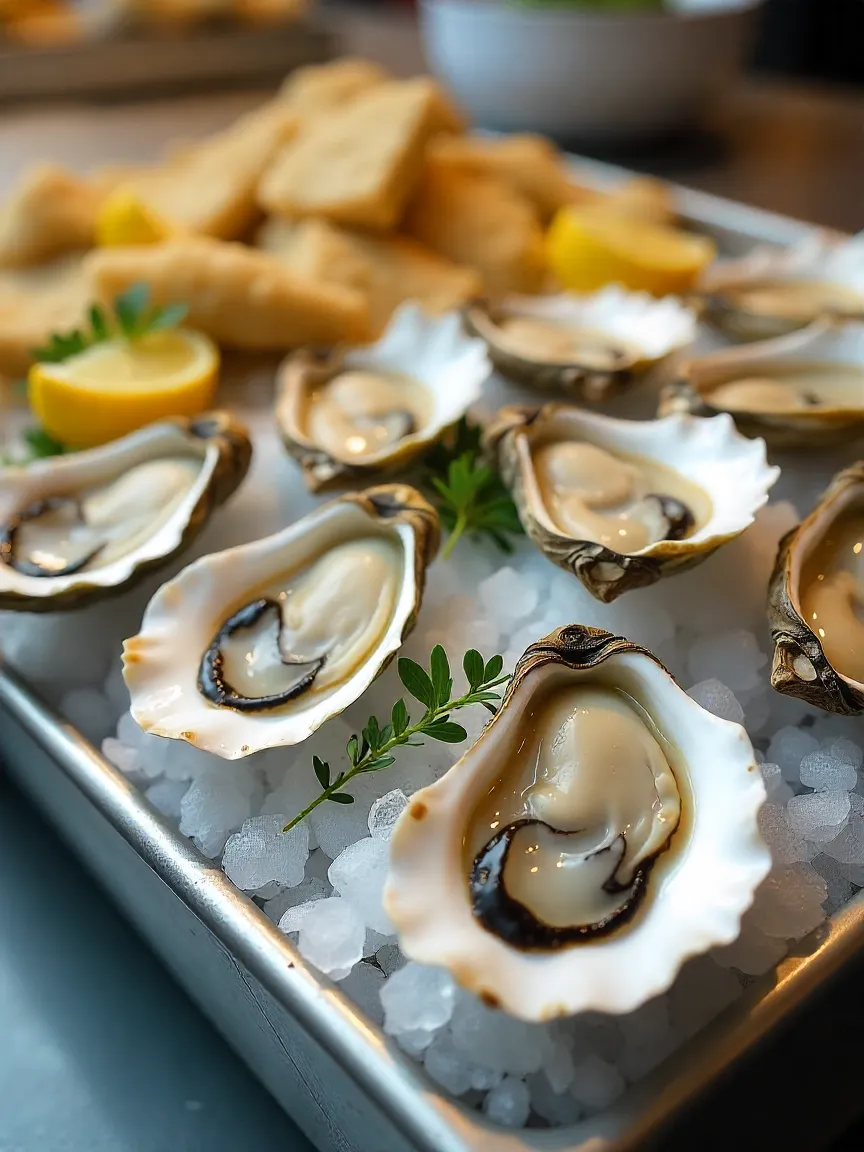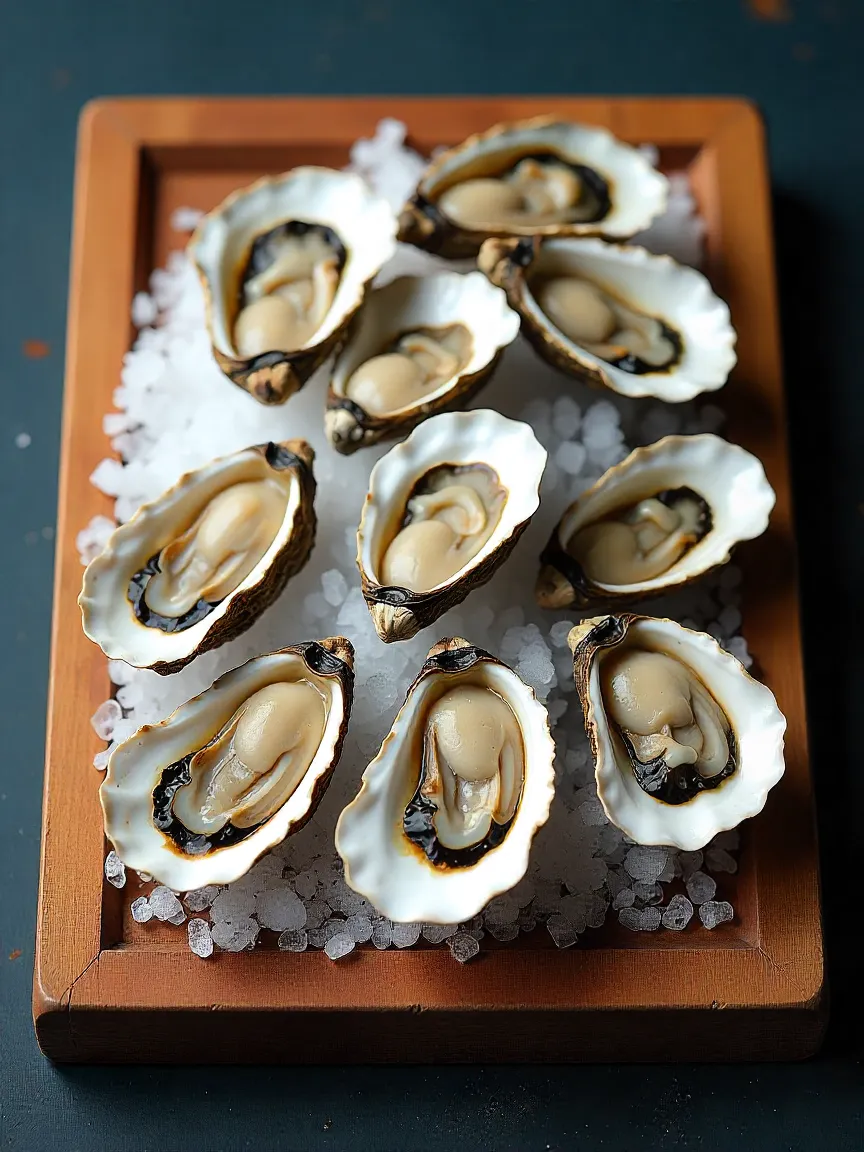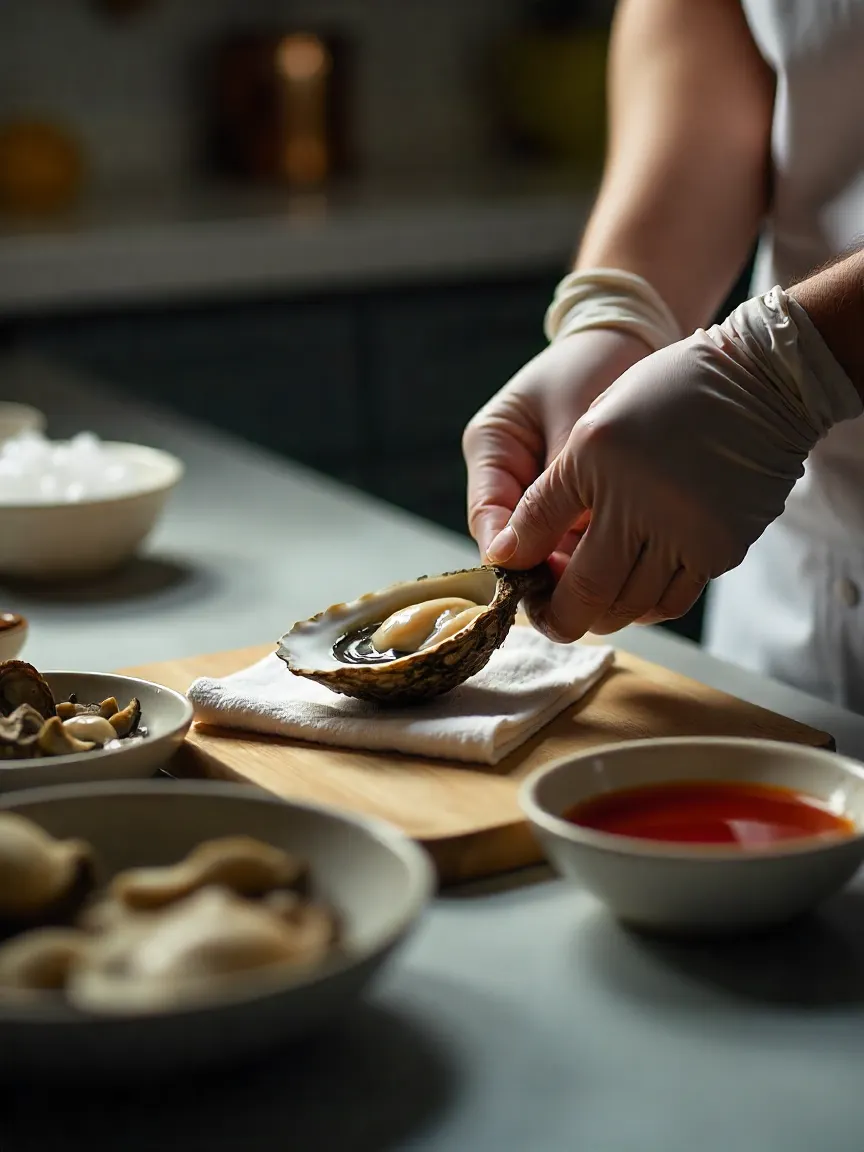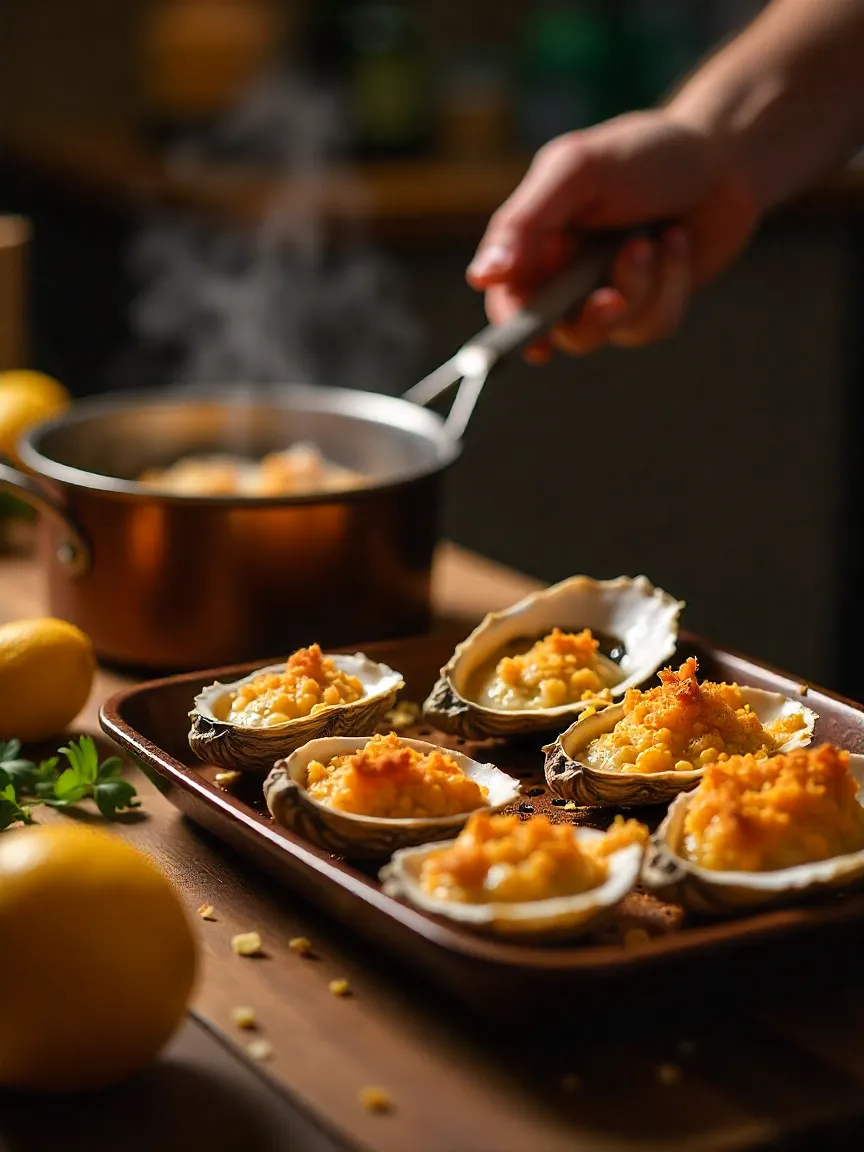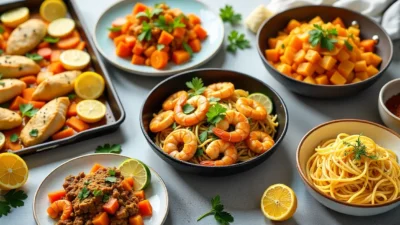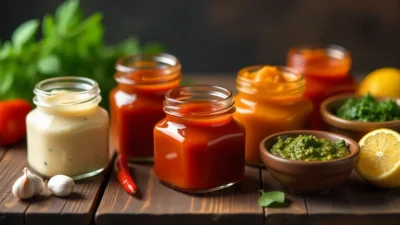Contents
Oysters are a luxurious seafood delicacy loved worldwide for their briny, ocean-fresh flavor, but for beginners, cooking oysters can feel intimidating. The truth? Preparing oysters at home is easier than you think—if you know the right steps.
The key to perfect oysters lies in three essentials:
✔ Proper Cleaning – Removing grit and dirt ensures freshness and safety.
✔ Careful Shucking – Opening oysters without losing the flavorful liquor inside.
✔ Choosing the Right Cooking Method – From grilling and steaming to frying and baking, the right technique can transform your oysters into a gourmet dish.
Whether you crave tender, juicy oysters or prefer a crispy golden finish, mastering these methods will help you create restaurant-quality results in your own kitchen.
In this guide, we’ll cover:
✅ How to select and store fresh oysters
✅ Step-by-step cleaning and shucking tips
✅ Popular cooking methods like grilling, steaming, frying, and baking
✅ Expert tips for flavoring and presentation
By the end, you’ll know exactly how to cook oysters like a pro, impressing your family and guests with this delicious seafood favorite.
Choosing the Best Oysters: Freshness and Quality Matter
When it comes to cooking oysters, quality starts with selection. The right oysters not only guarantee better flavor but also ensure safe consumption. Here’s how to choose like a pro:
1. Look for Intact, Undamaged Shells
Fresh oysters have tight, unbroken shells. Avoid oysters with cracks, chips, or gaping shells, as these often indicate that the oyster inside is dead or spoiled.
2. Check the Weight
Fresh oysters feel heavier in your hand because they’re full of natural briny liquid. This liquor is key to their flavor and moisture.
Pro Tip: Tap two oysters together—if they make a solid, dull sound, they’re likely fresh. A hollow sound often means they’re dried out.
3. Inspect the Oyster Liquor
When shucked, fresh oysters should have clear, salty liquor inside the shell. If the liquid looks cloudy, murky, or has dried out, skip it—that oyster isn’t fresh.
4. Trust Your Nose
Fresh oysters smell like the ocean: clean, briny, and fresh. Any sour or strong fishy odor is a warning sign that the oyster has gone bad.
Bottom Line: Always buy oysters from a reputable seafood market, keep them chilled, and cook or serve them as soon as possible for the best taste and safety.
Understanding Oyster Varieties and Proper Storage
Choosing the right type of oyster and storing it correctly are key steps to ensure flavor, texture, and food safety when cooking.
Popular Oyster Varieties for Cooking
Not all oysters taste the same—each variety has distinct characteristics that suit different recipes:
- Eastern Oysters (Crassostrea virginica)
✔ Briny, firm texture
✔ Popular along the U.S. East Coast
✔ Perfect for grilling and steaming - Kumamoto Oysters
✔ Small, sweet, and delicate flavor
✔ Excellent for raw serving or light steaming - Olympia Oysters
✔ Tiny but flavorful with a distinct, sweet taste
✔ Great for gourmet recipes or appetizers - Large Pacific or European Oysters
✔ Meatier bite, easier to handle
✔ Ideal for baking, frying, or hearty dishes
Pro Tip: Choose briny oysters for bold dishes (like grilled with herbs) and sweeter oysters for lighter preparations (like raw or lightly steamed).
How to Store Oysters Properly
To keep oysters fresh and safe:
✔ Temperature: Store at 35–40°F (2–4°C) in the refrigerator.
✔ Moisture: Cover with a damp cloth or wet paper towel to prevent drying out.
✔ Avoid Airtight Containers: Oysters need air circulation to stay alive.
✔ No Fresh Water: Never soak oysters—it kills them and ruins texture.
✔ Handling Shucked Oysters: Pat them dry before cooking to avoid excess moisture.
Bottom Line: Freshness and proper storage preserve flavor and reduce health risks, ensuring your oyster dishes taste their best.
Essential Preparation Tips for Cooking Oysters
Before cooking, proper preparation is crucial for safety, flavor, and texture. Follow these steps for the best results:
Cleaning and Scrubbing Oysters
✔ Rinse under cold running water to remove dirt, grit, and sand.
✔ Scrub thoroughly with a stiff brush, focusing on shell crevices.
✔ Avoid soaking in fresh water, which can kill oysters and alter their taste.
✔ Place cleaned oysters on a clean towel or tray, ready for shucking or immediate cooking.
Shucking Oysters Safely
Shucking requires care and the right tools:
- Protect your hand: Use a thick glove or fold a towel for grip.
- Insert an oyster knife at the hinge, twisting gently until the shell pops open.
- Slide the knife along the top shell to cut the muscle, keeping the blade level to preserve oyster liquor (the flavorful briny liquid).
- Check for shell fragments and remove them before cooking.
Checking Freshness Before Cooking
✔ Tap Test: Live oysters close their shells when tapped. If they remain open, discard them.
✔ Smell: Fresh oysters should smell like the ocean—clean and briny. Any sour or strong odor means they’re spoiled.
✔ Appearance: Look for plump, moist meat. Discard any dry or shriveled oysters.
Pro Tip: Store oysters on ice or in the fridge until cooking time to maintain freshness.
Bottom Line: Cleaning, shucking safely, and checking for freshness guarantee safe, flavorful oysters for any recipe.
Popular Cooking Methods for Oysters: From Juicy to Crispy
Oysters are versatile and adapt well to different cooking techniques, each offering unique flavors and textures. Whether you want them tender and briny or crispy and indulgent, there’s a method to suit your taste.
1. Grilling Oysters
✔ Flavor: Adds a smoky, charred note while preserving natural brininess.
✔ How-To: Place oysters on the grill, hinge side down, and cook until the shells slightly open (about 5–8 minutes). Carefully pry open and add toppings like garlic butter or herbs.
2. Steaming Oysters
✔ Flavor: Gentle cooking keeps them tender and juicy.
✔ How-To: Place oysters in a steamer basket over boiling water. Cover and steam for 5–7 minutes until the shells open. Serve immediately with melted butter or lemon.
3. Baking Oysters
✔ Flavor: Great for adding toppings like breadcrumbs, cheese, or garlic butter.
✔ How-To: Arrange shucked oysters on a baking tray. Add desired toppings and bake at 375°F (190°C) for 8–10 minutes. Perfect for recipes like Oysters Rockefeller.
4. Frying Oysters
✔ Flavor: Crispy outside, tender inside—a Southern classic.
✔ How-To: Dredge shucked oysters in seasoned flour or cornmeal. Fry in hot oil (350°F / 175°C) for about 2–3 minutes until golden brown. Serve with tartar sauce or spicy mayo.
Pro Tip: Don’t overcook! Overdone oysters become rubbery. Cook just until shells open or meat turns opaque.
How to Cook Oysters: Steaming, Grilling, and Baking
Oysters can be prepared in multiple ways, each delivering a unique flavor and texture. Whether you prefer a clean, ocean-fresh taste or a rich, smoky, or cheesy finish, these cooking methods are simple and delicious.
1. Steaming Oysters: Fresh and Tender
Steaming is one of the simplest and healthiest ways to cook oysters, perfect for beginners.
How to Steam Oysters:
✔ Place oysters in a steamer basket over boiling water.
✔ Cover the pot and steam for 5–7 minutes or until shells open slightly.
✔ Discard any oysters that remain closed.
Why It Works:
- Preserves natural briny flavor and moisture.
- Requires no added fat or heavy seasoning.
- Oysters stay plump and juicy.
Serving Ideas:
Serve plain, with fresh lemon wedges, or a light mignonette sauce for extra flavor.
2. Grilling Oysters: Smoky and Bold
Grilling oysters infuses them with a subtle smoky flavor and a hint of char, perfect for outdoor gatherings.
How to Grill Oysters:
✔ Preheat the grill to medium heat.
✔ Place scrubbed oysters shell-side down directly on the grates.
✔ Cook for 5–10 minutes until shells start to open and edges curl.
Pro Tip: Add garlic butter, fresh herbs, or hot sauce just before removing from the grill for extra flavor.
Why It Works:
- Enhances the oyster’s natural sweetness.
- Adds a charred, smoky note for a gourmet touch.
3. Baking Oysters: Comfort and Flavor
Baking oysters is ideal for creating warm, flavorful dishes like Oysters Rockefeller.
How to Bake Oysters:
✔ Preheat oven to 425°F (220°C).
✔ Arrange shucked oysters on a baking tray.
✔ Top with ingredients like cheese, breadcrumbs, butter, or spinach.
✔ Bake for 8–12 minutes, until toppings are golden and bubbly.
Why It Works:
- Delivers a rich, comforting flavor.
- Allows endless topping variations for creative recipes.
- Great for dinner parties and appetizers.
Bottom Line:
Each method—steaming, grilling, or baking—offers a unique way to enjoy oysters. Choose steaming for simplicity, grilling for smoky depth, or baking for indulgent toppings.
Serving and Enjoying Oysters: Tips for the Perfect Experience
Once your oysters are cooked, how you serve them can make all the difference. The goal is to enhance their natural briny flavor without overwhelming it.
1. Serve Immediately for Maximum Freshness
Oysters taste best when served right after cooking. Keep them warm if grilled or baked, or chilled on a bed of crushed ice if steamed and then cooled for a raw-like presentation.
2. Classic Garnishes
✔ Lemon Wedges: A squeeze of fresh lemon adds brightness and cuts through the brininess.
✔ Fresh Herbs: Chopped parsley, dill, or chives offer a subtle, fresh accent.
✔ Cracked Black Pepper: Enhances the oyster’s natural sweetness without overpowering.
3. Perfect Sauces for Oysters
- Mignonette Sauce: A mix of vinegar, shallots, and cracked pepper for a tangy punch.
- Garlic Herb Butter: Ideal for grilled or baked oysters.
- Cocktail Sauce: A zesty classic for bold flavor lovers.
- Hot Sauce: For those who like a little heat, a few drops can elevate the taste.
4. Pairing Ideas
✔ Bread and Crackers: A simple side that complements without stealing the spotlight.
✔ Fresh Salad or Slaw: Adds crunch and freshness to the meal.
✔ Beverage Pairings: Dry white wine, Champagne, or light beer pair perfectly with oysters’ briny notes.
Pro Tip: Serve oysters on a bed of coarse salt or ice to keep them stable and visually appealing.
Pairing Oysters with Sauces and Perfect Sides
The right sauces and accompaniments can elevate oysters, whether you enjoy them raw, steamed, grilled, or baked. The goal is to complement their natural briny taste without overpowering it.
Best Sauces for Oysters
✔ Mignonette Sauce:
A timeless classic for raw oysters. Made with vinegar, minced shallots, and cracked black pepper, it adds a refreshing, tangy kick.
✔ Fresh Lemon Wedges:
A squeeze of lemon brightens the flavor and balances the oyster’s salinity.
✔ Garlic Butter:
Perfect for grilled or baked oysters. Melted butter infused with garlic adds richness without masking the briny sweetness.
✔ Hot Sauce:
A favorite for spice lovers. Just a few drops provide heat without overpowering the oyster’s natural taste.
✔ Herb Butter:
Aromatic herbs like parsley or tarragon mixed with butter and a hint of garlic work beautifully for grilled oysters, adding depth and fragrance.
Ideal Side Dishes for Oysters
✔ Crackers or Crusty Bread: Adds crunch and helps soak up sauces and juices.
✔ Fresh Green Salads: Light, crisp greens with a citrus vinaigrette complement oysters’ richness.
✔ Coleslaw or Pickled Vegetables: Offers texture and acidity for balance.
Perfect Drink Pairings:
- Crisp White Wines (Sauvignon Blanc, Pinot Grigio)
- Champagne or Sparkling Wine for a touch of elegance
- Light Beer for a refreshing match with fried or grilled oysters
Pro Tip: Keep flavors light and complementary. Let the oyster’s natural ocean essence shine through every bite.

